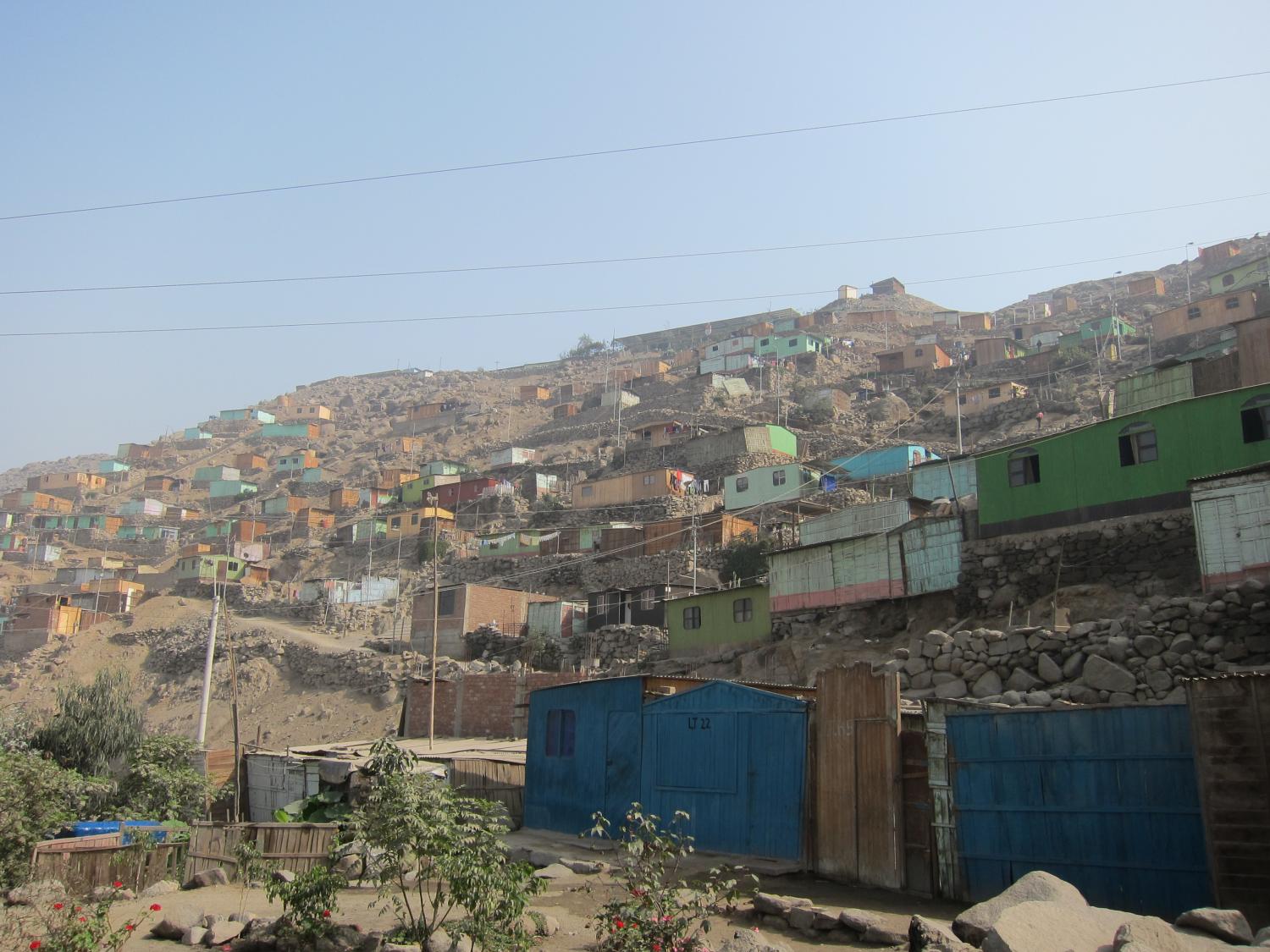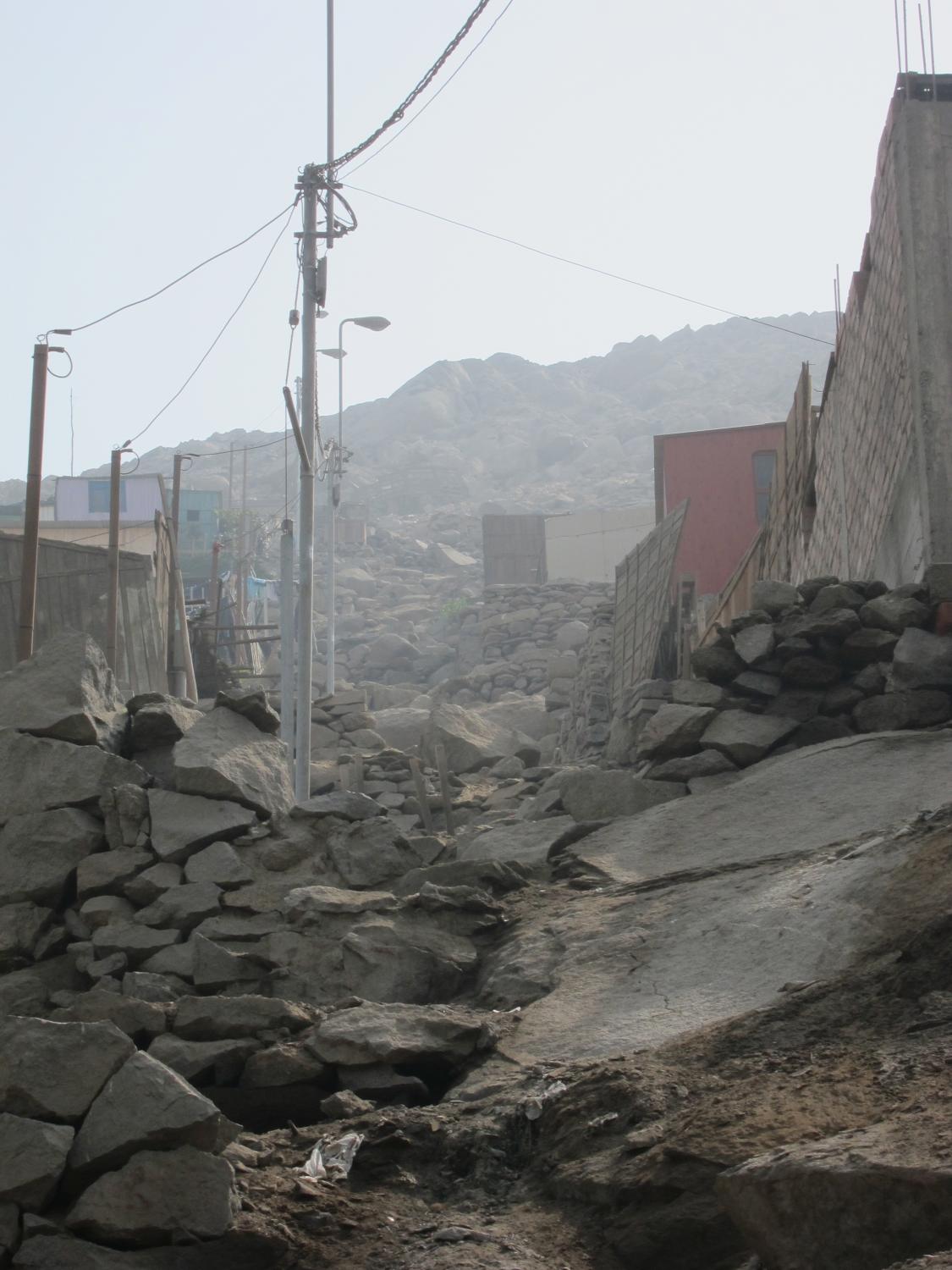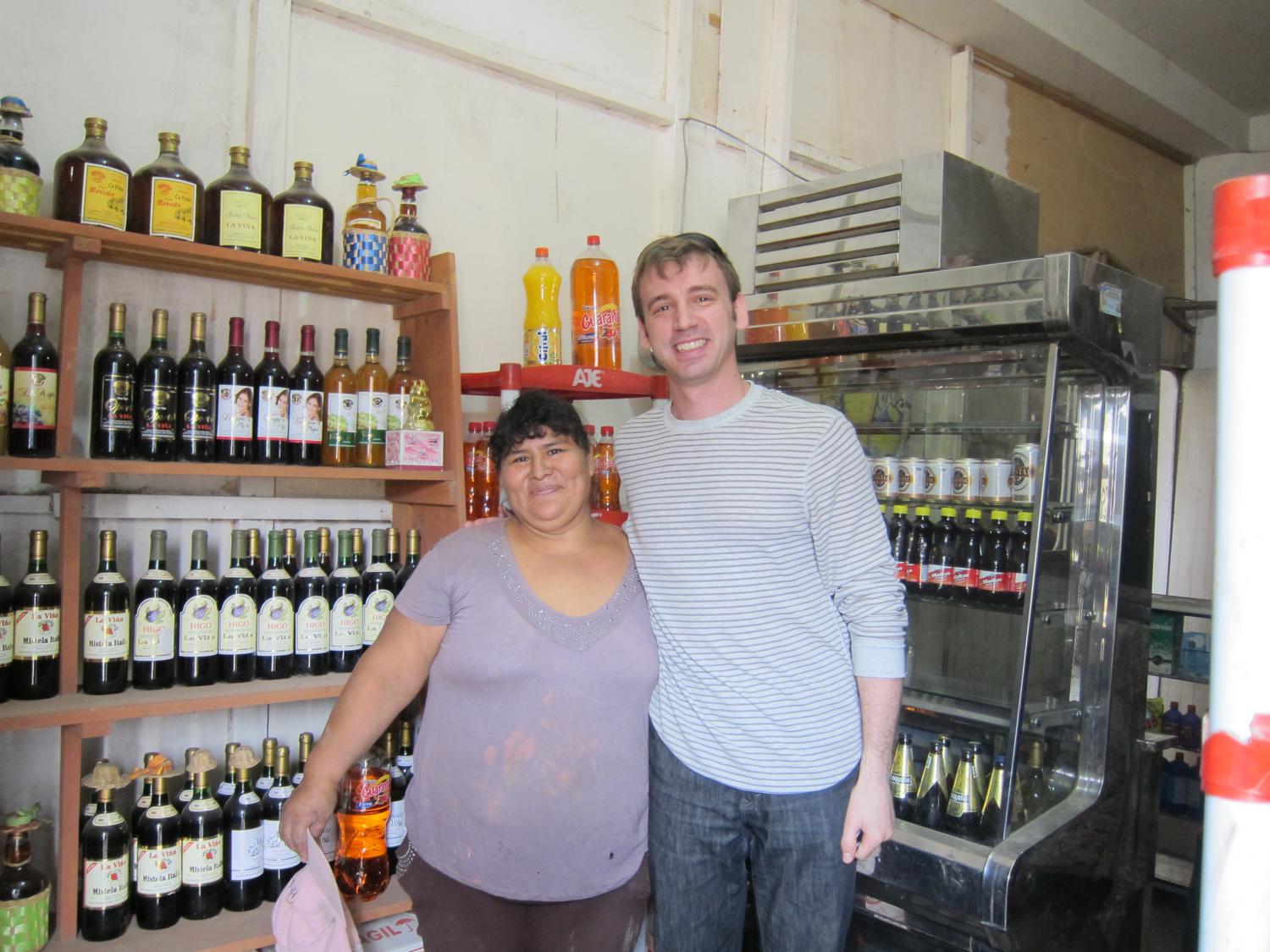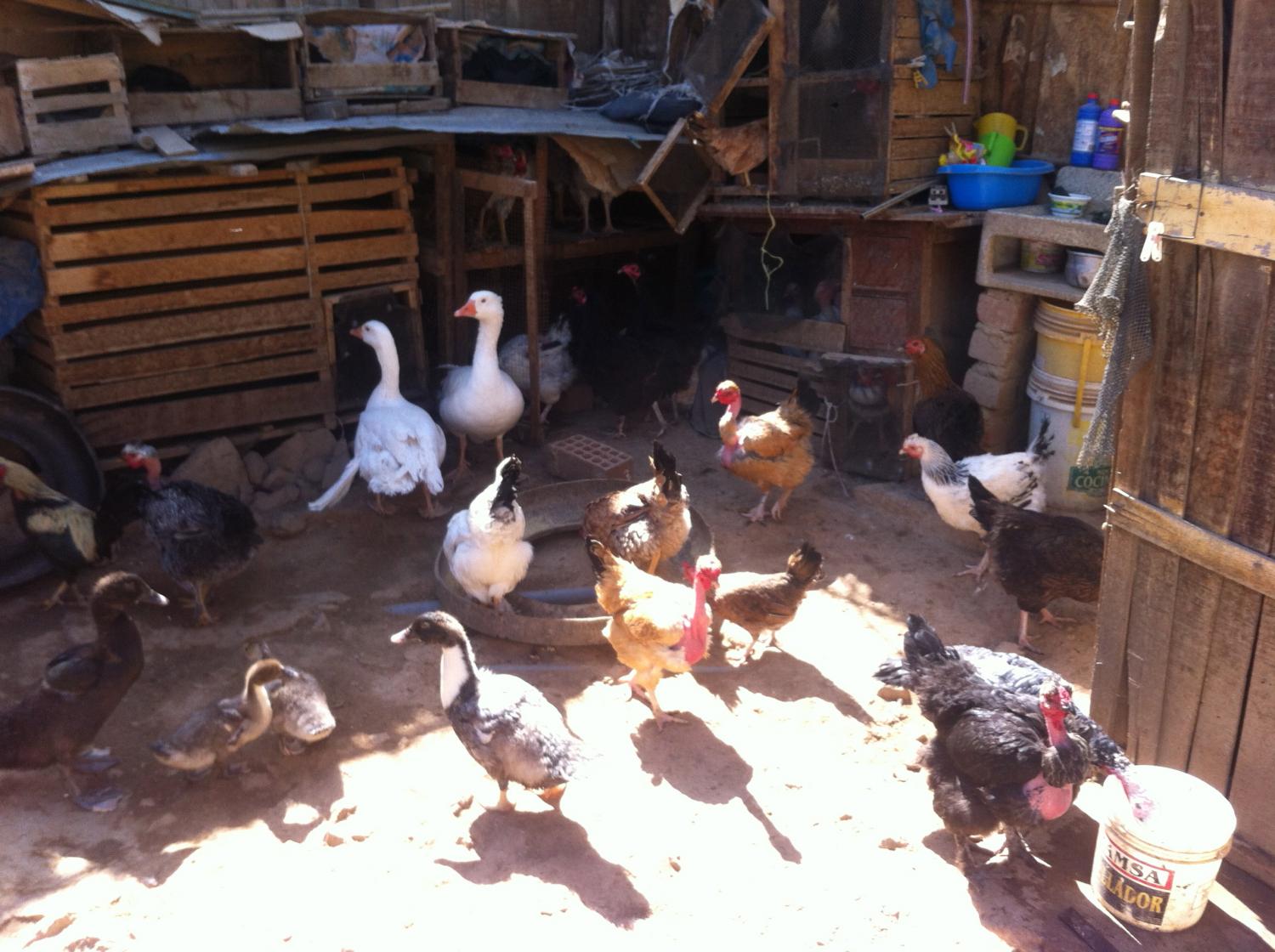Home • Microfinance • Article
Peru: Over the river and through the woods to visit Kiva borrowers we go!
July 1, 2013
Alright, you caught me. No rivers were forded, nor were any woods traversed. Mostly dirt roads were traveled on and hillsides were (carefully) climbed.
Life in Peru has been wonderfully intense, exciting, tiring, and challenging over the last few weeks. I am not going to dwell on the awesome ceviche and seafood I have been fortunate enough to eat. Nor will I say much about the recent 5.1 earthquake that originated 50 miles off the coast of Lima (or 4.6, depending on where you get your earthquake news from).
What I would like to discuss are the recent visits I made to Kiva borrowers. (Though I will say that the earthquake was slightly unsettling because I was sitting at my desk minding my own business when I thought a large airplane was fast approaching overhead causing everything around me to shake for about five seconds at which point I realized there was no airplane and I likely was experiencing an earthquake for the first time, and, of course, my colleagues had a good laugh when I thought it was a big deal..."Sure," they said, "this is typical...one or two times per year." NBD, I guess.)
EDAPROSPO: Group Lending and Student Loans
The field partner I am currently working with is EDAPROSPO - a well-established NGO for nearly 35 years. EDAPROSPO is one of Kiva’s longest standing South American partners, having received more than five million dollars in loans from Kiva lenders over the last five and a half years. Microfinance institutions come in all shapes and sizes - who they loan to, the size of loans, geography of loans, loan use, etc. EDAPROSPO is focused mainly on lending to groups of female entrepreneurs who otherwise have little to no access to affordable capital to grow their business. These groups are composed of at least six individuals and elect a president, treasurer, and secretary. (For more on group lending in Peru, check out a blog post from a previous Kiva Fellow at EDAPROSPO here. Also: a great blog post on why you should support group loans on Kiva.)
EDAPROSPO also lends to students who need to borrow for higher education fees, a loan product that they are trying to develop to include not just students who are given a stamp of approval by a current borrower, but also any student who needs a loan related to completing their university degree. Student loans are difficult to come by in Peru, as banks consider them very risky and thus charge a much higher interest rate.
What’s a Borrower Verification?
One of the major projects I was assigned for my Kiva Fellowship was to conduct a "borrower verification." This essentially means meeting a randomly selected group of ten Kiva borrowers who are clients of my field partner in order to make sure that the information published online at Kiva.org is accurate: the borrowers exist, the photo in their Kiva online profile is actually them, they used the loan for what was indicated online, they were aware their information would be published for the entire world to see (i.e., on the internet, etc.) It's an audit. But a fun one!
What this means is that I would get to meet people from all over the Lima region who for one reason or another needed a small loan to help develop/grow/sustain their business in order to support their family (many of these women are single mothers) and improve their financial well-being. I would also get to meet ambitious college students on track to finish their university degree in order to achieve their goals, all the while working a full-time job during the day and attending class at night.
One pillar of Kiva’s values is transparency. This “borrower verification” is just one example of how Kiva demonstrates its transparency to both lenders and field partners. It is not just a way for Kiva to monitor and oversee loans, but also a way for Kiva to learn about how it can improve its work with field partners in order to have the greatest impact. (Posts by past Fellows’ on their experiences with borrower verifications: here and here and here.)
Some Highlights:
- My first borrower visit to meet Monica, a 26-year old single mother, who as part of the Caminando Juntos group ("walking together") used her loan to purchase cheese which she then resells. Without her loan, she told me that she would have no other option for accessing funds and would struggle with underemployment and a non-livable wage. Her near-term dream is to purchase a moto so she can more easily transport her food items to sell. Currently, she has to use buses and taxis to carry her goods, which limits the amount of she can sell and is an additional expense. She lives in a neighborhood outside of Huaycán - a small city one hour east of the city of Lima. The daunting task for me: climbing the narrow and slightly unstable set of "stairs" to reach her house. Cuidado!
 Somehow I made it to the top.
Somehow I made it to the top. View from halfway up the hill to Monica's house.
View from halfway up the hill to Monica's house. Successfully climbed these! **cue the music**
Successfully climbed these! **cue the music**- Luzmila - bodega (small grocery store) owner and member of Mujeres Emprendedoras group ("entrepreneurial women"). A charismatic woman who used her part of her loan to purchase wine to sell for Mother's Day and Father's Day. She offered me a sample of her product. Since it was nearing the end of the workday, I acquiesced. Then she gave me a parting gift -- a bottle to celebrate the holiday with my new colleagues!
 Luzmila and I. Unfortunately she does not take online orders.
Luzmila and I. Unfortunately she does not take online orders.- Hernán - a jovial international business student who is using his loan to attend a private institute to learn English - a requirement of his degree program. English classes at his university are not great, so he needs to spend the extra money to in order to speak well enough to work internationally. At the end of our conversation, Hernán asked if he could find me on Facebook (of course he can). That made me smile. (I'm still waiting for a friend request.)
By the numbers:
20--dollars to purchase of a duck from Olinda, a Kiva borrower who is a member of Una Luz al Desarrollo ("a developing light") group. She raises ducks and chickens and used her loan to purchase animal feed.
 Olinda's chickens and ducks. I'm no poultry farmer, but this looks like free range to me.
Olinda's chickens and ducks. I'm no poultry farmer, but this looks like free range to me.1--plate of chanfainita accidentally eaten at Nelly's house, a Kiva borrower who used her loan to purchase cooking supplies for her lunch delivery business. (Let’s just say cow lung is not a staple in my diet.)
2,000--approximate population of Callahuanca, a farming town 6,000 feet above sea level, residence of San Pablo de Chauca Group, one of EDAPROSPO's newest group of Kiva borrowers. Their main products are chirimoyas and avocados.
 Callahuanca town plaza. Chrimoya fields on the hillside in the background.
Callahuanca town plaza. Chrimoya fields on the hillside in the background.2--kilos of chirimoya received as a gift from said borrowers.
 Chirimoya. It's like sweet pudding inside of a fruit. Each year there is a chirimoya festival in Callahuanca. Not surprising that the town is nicknamed "Chirimoya Paradise."
Chirimoya. It's like sweet pudding inside of a fruit. Each year there is a chirimoya festival in Callahuanca. Not surprising that the town is nicknamed "Chirimoya Paradise."8, 4, 1--buses, shared taxis, regular taxi--transportation taken from 730am-830pm to successfully finish my borrower verification.
12.41--total dollars spent on said transportation.
10--how I felt after a week of borrower visits (on a 1 to 10 scale)!
Overall, it was a smooth and inspiring set of meetings with Kiva borrowers. I am grateful for having had the opportunity to meet such hard-working, family-oriented, and ambitious individuals.
Hasta la próxima!
________________________
If you enjoyed this update, please join the Fans of EDAPROSPO Kiva Lending Team, or fund a loan from EDAPROSPO.
PREVIOUS ARTICLE
Southeast Asian hospitality →NEXT ARTICLE
Growing Peppers, Cultivating Businesses →













